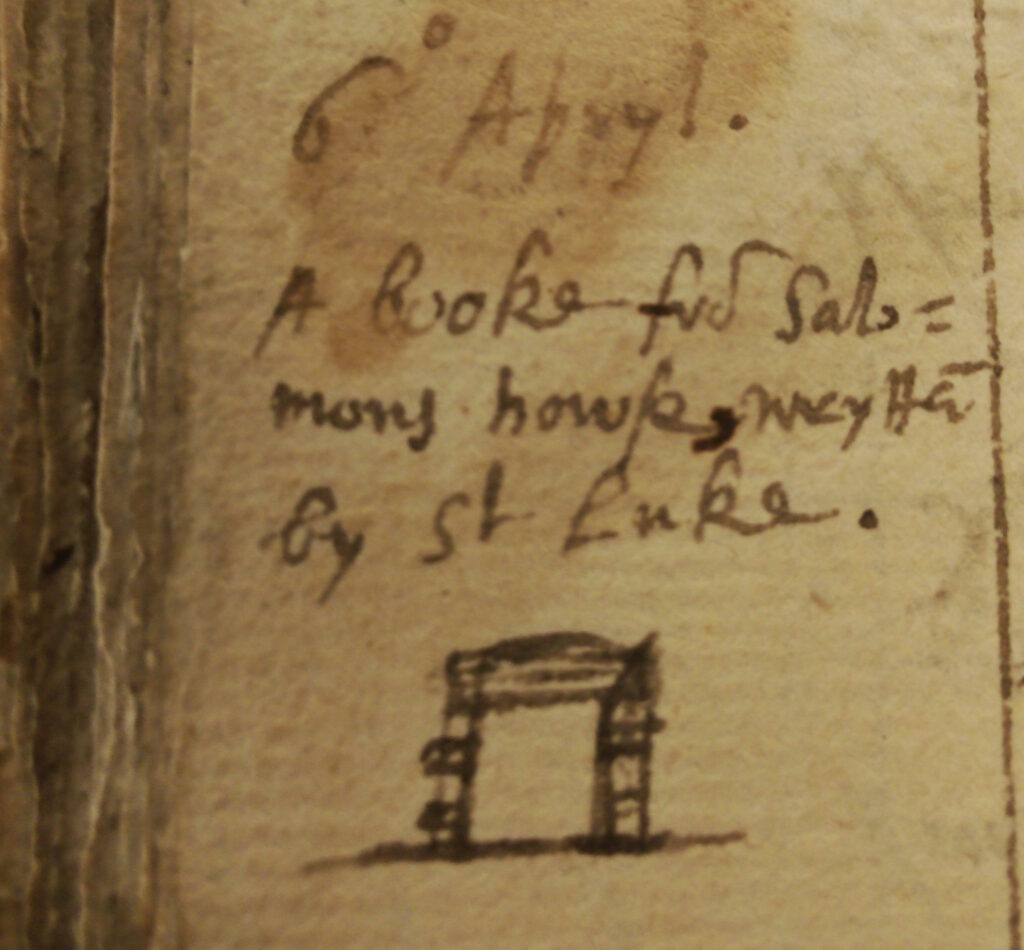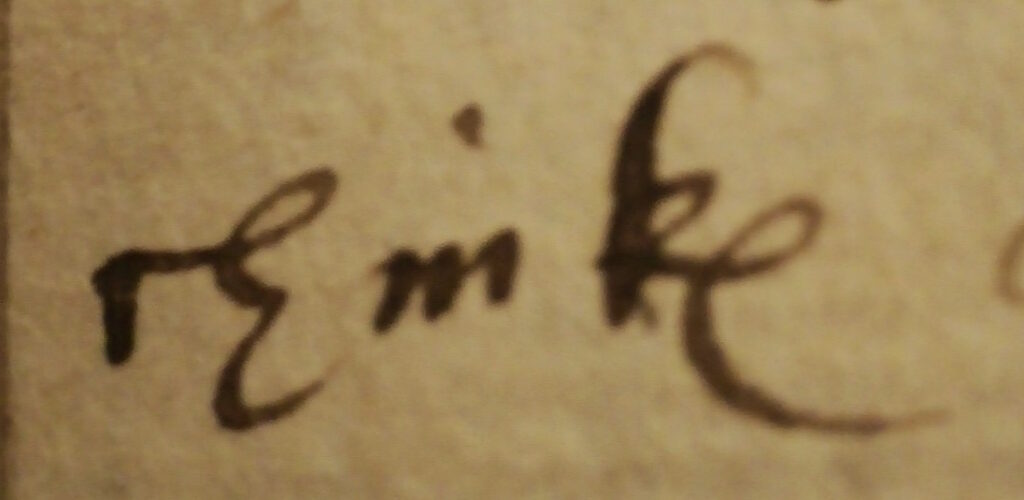
When work happens to take me to the great libraries of the world, I usually try to set aside a day or two to spend some time digging around in old manuscript collections for anything that might pique the interest of an undercover occultist. In my ‘home’ library – the British Library – many of these have been examined by our magician predecessors. It’s hard not to feel the shades of Mathers, Crowley or Yeats – and countless other less public magicians – lurking at one’s elbow in the calm silence of its manuscripts room. As someone whose exoteric training allows him to read crabbed and difficult secretary hand – as well as Greek and Latin – with reasonable facility, the hours can pass very rapidly, in a half-trance of fascination.
Despite the attentions of both magicians and, more recently, scholars of magic, the manuscript collections of even great libraries still have much to give up – not to mention the even more scattily catalogued collections of great cathedral foundations and minor libraries. The gradual emergence of serious scholarship on grimoire traditions, and the welcome revival of interest in practical grimoire magic outside the system-building mania and constraints of Victorian occultism, mean that ever more serious (and occasionally eccentric) editions of these texts are coming to market. But should you have the privilege and access to examine manuscripts in the flesh, I recommend it – nothing quite beats holding in one’s hands the record and work of our predecessors, or the pleasure of deciphering their abbreviated notes and practical emendations.
A recent trip to the BL allowed me to set aside some time to examine two relatively well-known manuscripts: Additional MS 36674 and Sloane MS 3853. The former particularly interested me because it contains, alongside a relatively conventional instruction manual, the record of visions, spirit communications and interactions achieved by the authors. As those who have trawled through magical manuscripts know, practical records are far less common than handbooks and grimoires. We can speculate as to why this might be: most likely, perhaps, is fear of persecution – possession of grimoires being one thing, proof of practice quite another – or perhaps it’s only with nascent experimental scientific mentalities such records seem desirable. It should be understood that there is no clear, bright line between grimoire and record: many grimoires, including the instructional part of this manuscript, bear the traces of practical revision and innovation in the light of practice. But an unadulterated record is a relatively rare thing.
The MS records the work of one ‘H.G.’ – Humphrey Gilbert – and his skryer, John Davis, as well as Adrian Gilbert, the magician’s younger brother. As the one scholarly discussion of this manuscript notes, there is very little in the lives of these men, all competent and practically-minded men of the Elizabethan world, to suggest an interest in ritual magic. Yet for an intense period in early 1567/8, Gilbert undertook an intense series of operations in which they conjured the fallen angel Azazel, and through him summoned the spirits of great dead magicians, including Solomon and Agrippa, to learn secret magical techniques and receive a great book of magic.
There is much of interest here, not least the focus on the great fallen angel Azazel, often associated with magical learning, the sudden appearance of uncalled spirits (Luke the Evangelist and John the Baptist) as well as the obvious debts to earlier necromantic handbooks. Much of the instruction is familiar – requirements for sexual abstinence, ritual purity, the presence of the four kings – though blended with some directly received magical prayers. It is the visions themselves that are most captivating, however. As is occasionally the case in John Dee’s records, many of the visions seem to involve not only the skryer but the other participants as well, sometimes quite actively. Personally, I don’t believe this to be mere literary artifice, but a probable effect of the operation. Many of the visions are the skryer’s alone, however, and take the form of lights, clouds, and so on. But often they are extremely striking.
Here is a transcription of one such vision, at sunset on the 24th February 1567/8:
Jo[hn] sawe a great woode, having a greate howse in the middes of
it, with a little howse by yt most strongly bylded; having an iron
dore, with 9 key holes. these being written on the dore these caractes
following,

And in this howse
he saw a chamber richely hanged with gold, in which chamber there was
a tre of christale which was written upon very well, having many branches
with a dore on hym as it were with 7 key holes, which had the
[ch***] written on yt; with in the which there ware many bookes, whereof
one had a christall cover, an other with the heary syde of a skyn out-
ward; with divers other goodly bookes; this tre sprede, & grewe as
on the next leaf followeth …
(Add MS 36674, fol. 59r.-v.)
(NB: see the palaeographic note below for the difficult word in square brackets.)
There’s much about this vision that is of interest: first, the shifting and repeating psychic geography of the place – a tree inside a chamber inside a house inside a wood, and a tree of marvellous shining crystal which itself grows and spreads. These kinds of experience will be familiar to any practical magician. The obviously symbolic nature of the vision – nine keyholes for the heavens? seven for the planets, or the seals of the book of revelation? – and its setting cry out for interpretation. (A later annotator interpreting the vision – probably Gabriel Harvey – puts the astrological symbol for the sun in the margin next to the description of the golden inner chamber.) Most of all, the motif of hidden knowledge – in the form of secret books, here – runs throughout the visions, and is key to Gilbert’s efforts. Obviously, hidden magical books have a long pedigree, from the famous stelae of Hermes Trismegistus, which the magicians of ancient Alexandria believed to be kept in a pristine temple near the source of the Nile, or, later, the mysterious book buried with Christian Rosencreuz in his sealed tomb. Here the magician wants to cut out the terrestrial middleman and go direct to the spirits of ancient magicians themselves for the best book. Commendable.
There is much else of interest in the visions (and I can recommend working with the sigils dutifully recorded above, too). Three great dragons make an appearance, and at one point ‘H.G.’ is menaced in the course of a vision by a demonic spirit taking the guise of a great and sinister dog. Being an Elizabethan magician, made of sterner stuff than some of today’s, he shouts ‘O thou wicked and rebellious spirit, God confound thee!’ and casts his dagger at it – an eminently sensible and practical use of magical tools. At other points the spirits give practical advice – such as the need for the skryer to dress as the magician, in a black robe and cloak, or the wisdom to be learned from Solomon in calling spirits. The record ends with a tantalising note in April of the same year: ‘my boy went to Solomon’s house in the morning, & came home to me … and brought me from there a booke, written by St Luke the Evangelist’. H.G. had found his book.

Palaeographic note
The hand in the ‘visions’ section of the MS is distinct from the hand in the instructional manual, and it is reasonable to assume it was prepared by an amanuensis from H.G.’s notes (internal evidence like doubling and miscopyings suggest this). It is a competent and typical secretary hand of the period, and only occasionally crabbed or hurried. The difficult to read word above looks in manuscript like this:

The first digraph gives no trouble: it is a fairly standard secretary ‘ch’. The second mark looks like a series of minims – possibly ‘mi’ or ‘in’, given the dot above it, but it could be many other things besides. The last digraph looks like a ‘k’ and a terminal ‘e’, or possibly ‘es’. Together this gives us a tentative ‘chmike’, which we might be tempted to amend to ‘chymike’, despite the obvious absence of a ‘y’. This might accord with Adrian Gilbert’s interest in alchemy.
But the internal structure of the sentence suggests against this: why preface it with a definite article? ’the chymike’ makes little sense. Knowing the folio was prepared by an amanuensis, probably working at speed, who made some errors in the copying, I propose to read the word as ‘charaktes’, i.e., a repetition of the characters previously seen. Perhaps a messy secretary hand ‘r’ could be misread as a series of minims, or a ’t’ get lost. Nonetheless, this is a highly conjectural note. One might also choose to read it as ‘chinkes’, for instance, which picks up on the imagery of locks and key holes, but it makes little sense to think of the charactery as a series of keyholes (… or does it?) Other suggestions welcome!
Note: between the first publication of this post and its reuploading on this new site, the above section of the manuscript has been published in a beautiful edition by the legendary Scarlet Imprint. The edition comes with super critical apparatus and some very penetrating essays by the scholar-practitioners Phil Legard and Al Cummins. (Legard, incidentally, reads the palaeographical mystery – I assume by Occam’s razor – as ‘chinkes’.)
Leave a Reply